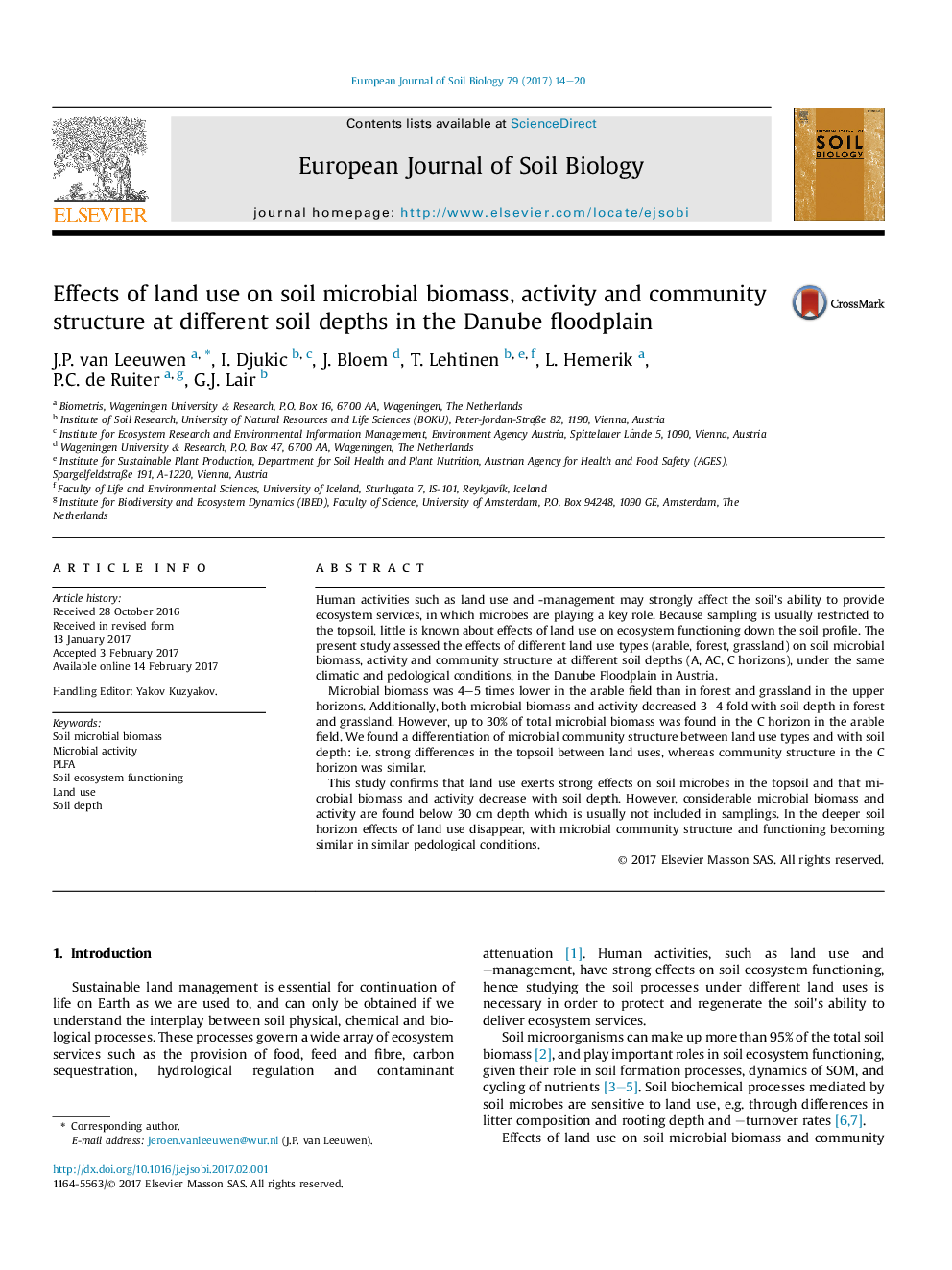| Article ID | Journal | Published Year | Pages | File Type |
|---|---|---|---|---|
| 5744247 | European Journal of Soil Biology | 2017 | 7 Pages |
â¢Land use strongly affects soil microbiology, but only in the upper soil horizons.â¢Microbial community structure and functioning were similar in the C horizon.â¢Considerable microbial biomass and activity were found below 30 cm depth.
Human activities such as land use and -management may strongly affect the soil's ability to provide ecosystem services, in which microbes are playing a key role. Because sampling is usually restricted to the topsoil, little is known about effects of land use on ecosystem functioning down the soil profile. The present study assessed the effects of different land use types (arable, forest, grassland) on soil microbial biomass, activity and community structure at different soil depths (A, AC, C horizons), under the same climatic and pedological conditions, in the Danube Floodplain in Austria.Microbial biomass was 4-5 times lower in the arable field than in forest and grassland in the upper horizons. Additionally, both microbial biomass and activity decreased 3-4 fold with soil depth in forest and grassland. However, up to 30% of total microbial biomass was found in the C horizon in the arable field. We found a differentiation of microbial community structure between land use types and with soil depth: i.e. strong differences in the topsoil between land uses, whereas community structure in the C horizon was similar.This study confirms that land use exerts strong effects on soil microbes in the topsoil and that microbial biomass and activity decrease with soil depth. However, considerable microbial biomass and activity are found below 30Â cm depth which is usually not included in samplings. In the deeper soil horizon effects of land use disappear, with microbial community structure and functioning becoming similar in similar pedological conditions.
